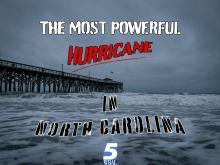- Seven months after Hurricane Helene, Chimney Rock rebuilds with resilience
- Wildfire in New Jersey Pine Barrens expected to grow before it’s contained, officials say
- Storm damage forces recovery efforts in Lancaster, Chester counties
- Evacuation orders lifted as fast-moving New Jersey wildfire burns
- Heartbreak for NC resident as wildfire reduces lifetime home to ashes
On anniversary of Hurricane Florence, state leaders say too many people still waiting for help

On the fourth anniversary of Hurricane Florence, state lawmakers are questioning the officials who manage disaster recovery in North Carolina. They say too many survivors are still waiting for help.
Four years ago Wednesday Florence came ashore near Wilmington. Two years before that, Hurricane Matthew hit the state.
The state has received $780 million in federal assistance for storm recovery from Hurricanes Florence and Matthew.
Still years later, thousands of families are trying to get their homes rebuilt or replaced.
Rep John Bell lives in Wayne County, which was hard hit by both storms. He said the hearing is not meant to be political, and the goal is to figure out how to get people help more quickly.
“Today, we have people displaced, stuck and waiting for assistance,” he said. “Not just from [Florence] but as far back as Hurricane Matthew. In my opinion, that’s unacceptable. I want the general public and the committee to under that this actually represents 2,167 days that many of these folks have gone homeless,”
The state’s Office of Resilience and Recovery said the state didn’t receive federal money for Hurricane Florence until 2020. Since then, the coronavirus pandemic, supply chain issues and labor issues have slowed down work.
“This recovery is not going as you want it to go … It’s not going as the families behind me and in eastern North Carolina want it to go. This is on me,” Hogshead said.
Hogshead said overly strict state and federal requirements also led to mountains of red tape.
Only about 25% of people who applied for help after Florence have completed the recovery process.
Hogshead said the supply and labor pressures are easing, and they’ve also cut some regulations to get people back into homes faster.

